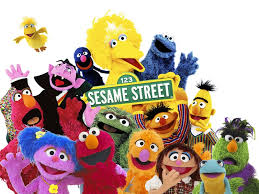'Sesame Street' Move Symbolizes Transitional Moment for Kids TV

The announcement by HBO and Sesame Workshop of a landmark multiplatform deal for Sesame Street signals how dramatically the preschool TV landscape has shifted since my book, Anytime Playdate: Inside the Preschool Entertainment Boom, or, How Television Became My Baby's Best Friend.
When I started my reporting in back in 2006 (the book came out two years later), I decided to focus on Nickelodeon. Its ratings were surging and it had some of the most lucrative properties in the entire kids space, Blue's Clues and Dora the Explorer. I also spent a lot of reporting time getting to know Sesame Workshop, a model to the entire kids entertainment world in terms of how thoroughly researched and vetted their programming is. (It's hard to find any consultant or researcher working on a preschool show who hasn't logged at least some time in the Workshop.) Without getting too deep into the child-development weeds, at that time there was a vigorous debate about the relative educational merits of Blue's Clues vs. the "magazine format" Sesame Street. Malcolm Gladwell, in The Tipping Point, sided with Blue's.
A decade later, Nick is still a force, but the business narrative has dramatically changed. Digital consumption is growing so rapidly that it has forced all players to adapt. Streaming services like Amazon and Netflix have fortified their kids lineups. YouTube even created a walled garden for young-skewing fare. Nick, seeing its linear ratings and ad sales erode, has announced a Noggin-branded OTT service that will serve up select library titles without ads for $5.99 a month.
The HBO-Sesame deal, decried by some who see profit motives undermining the free-access principals on which public broadcasting was founded, will put brand-new episodes of Sesame Street on the premium service and create more reasons for people to subscribe to the OTT service HBO Now. What appealed to Sesame Workshop was being able to fortify its production budget and recover from declining DVD sales, which largely explain double-digit declines in licensing revenue in recent years.
As a parent and a journalist covering the kids realm (the former led to the latter) I see this as the leading edge of a lot more changes to come. Those dismayed at the migration of Big Bird to the land of Tony Soprano should brace themselves for even bigger changes as a business sector that has relied on revenue streams like advertising, licensing and, in the case of Sesame Street, the government toy known as PBS.
At the heart of all this transformation is the way kids and parents view TV itself. The idea of selecting a channel on a cable box or tuning it in with rabbit ears, in a world of apps and OTTs, seems more and more anachronistic. My kids, 8 and 12, are certainly members of a generation that, from infancy, has craved video entertainment tailored to them. But where they are different than us oldsters is in their lack of allegiance to traditional TV—they just want their stuff, on demand and wherever they happen to be.
Broadcasting & Cable Newsletter
The smarter way to stay on top of broadcasting and cable industry. Sign up below



